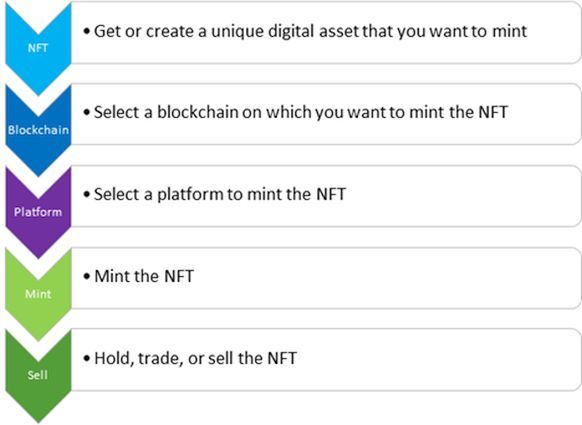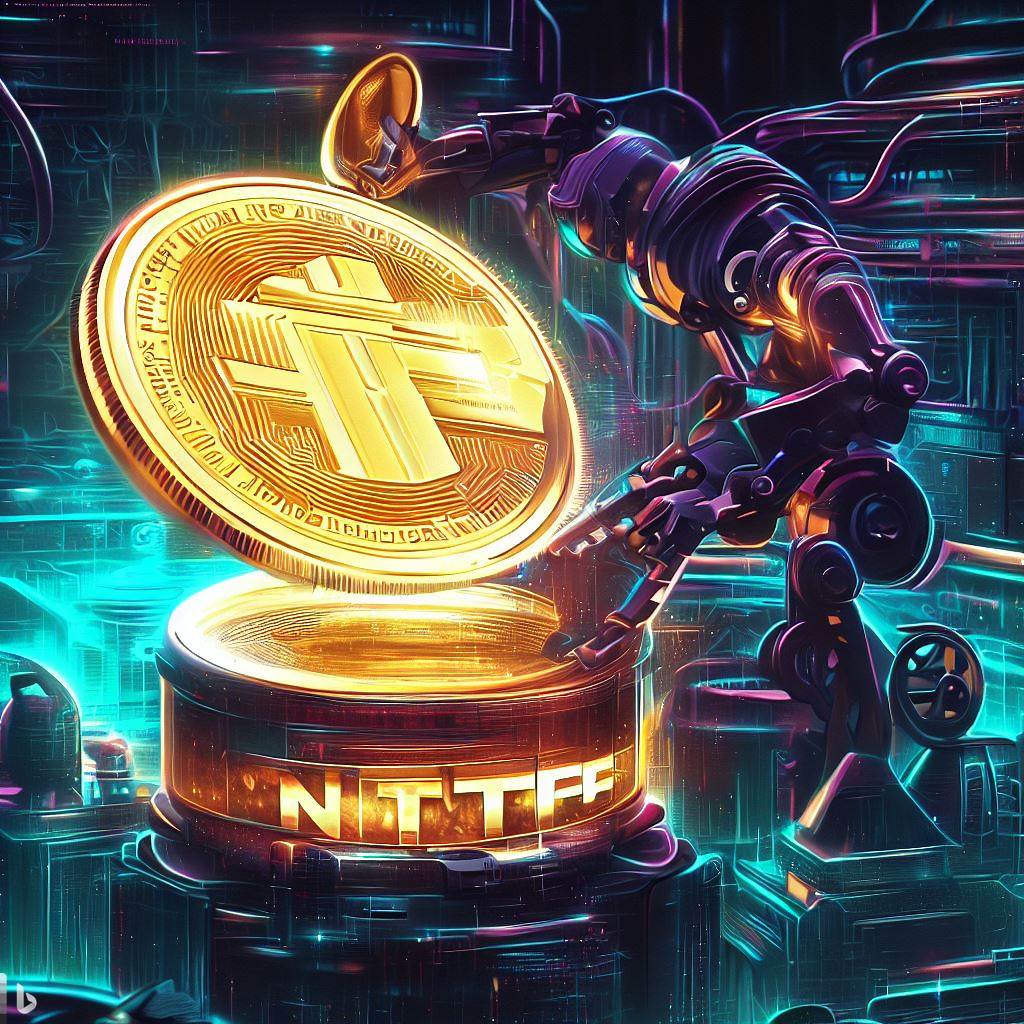An NFT, or non-fungible token, is a digital asset representing ownership of a unique item or piece of content, such as artwork, an audio file, a video clip, or a post. Unlike fungible tokens such as cryptocurrencies, which can be multiple with the same value, each NFT is unique and can’t be exchanged for another NFT on a one-to-one basis.
NFTs are created using blockchain technology, allowing their ownership and authenticity to be verified through a decentralized ledger. This makes it possible to create a one-of-a-kind digital asset with a verifiable history of ownership.
Using blockchain technology, Minting an NFT creates a unique and indivisible digital asset. When someone mints an NFT, they create a new, unique digital asset verified and secured by a blockchain network.
To mint an NFT, the creator typically needs to follow steps that involve selecting a platform, creating the digital asset, choosing a file format, setting a price, and minting the NFT. Once the NFT is minted, it is assigned a unique identifier that distinguishes it from any other tokens on the blockchain.
Process of minting an NFT
Minting an NFT involves creating a unique digital asset and registering ownership of that asset on a blockchain network. Here is a general overview of the process:

1. Create or obtain your digital asset:
The first step is creating or obtaining a unique digital asset you want to represent as an NFT. This could be a piece of artwork, a video clip, a music file, or any other type of digital content that you own the rights to.
Some artists create a collection of digital assets with some utility. For example, you could create a collection of 1,000 NFTs that represent an exclusive membership of an online club.
2. Choose a blockchain platform:
The next step is to choose a blockchain platform that supports the creation and storage of NFTs. The most popular blockchain platform for creating NFTs is currently Ethereum, but other blockchains also support NFTs, such as Binance Smart Chain, Flow, Solana, Polygon, Algorand, Stratis, and Near.
The selection of a blockchain platform depends on your needs and experience. For example, if you are experienced with the Near protocol, you may want to choose the Near protocol as your blockchain.
3. Choose a minting platform:
Once you have your digital asset, you must choose a minting platform to create your NFT. Several popular NFT minting platforms exist, including OpenSea, Rarible, and Mintable. Each platform has its own process for creating and selling NFTs.
While choosing a minting platform, you may want to be careful with the fees. Some platforms offer free or minimal fees, while others charge up to 10% of expenses. Sometimes, this fee may or may not include the gas fees. The gas fee is the cost of the blockchain to store the NFT transaction on a blockchain. Some blockchains are much costlier than others.
4. Mint your NFT:
Once you’ve chosen a minting platform, you must upload your digital asset and follow the platform’s instructions to mint your NFT. This typically involves specifying the name and description of your NFT, setting a price or auction, and paying any associated fees for minting on the blockchain network.
5. Sell or trade your NFT:
Once your NFT is minted and registered on the blockchain, you can sell or trade it on an NFT marketplace or platform. The value of your NFT will depend on various factors, including the creator’s popularity, the uniqueness of the digital asset, and the overall demand for NFTs.
What are the benefits of minting an NFT?
There are several benefits to minting NFTs, including:
Ownership and Authenticity: NFTs provide proof of ownership and authenticity for digital assets, which is important for creators and collectors. Because each NFT is unique and verified on the blockchain, it is easy to verify the ownership and authenticity of the asset.
Value: NFTs can hold significant value, especially for rare or unique digital assets. This allows creators and collectors to monetize their digital creations and assets in a new and meaningful way.
Accessibility: NFTs allow anyone to own and invest in digital assets. This is a significant shift from traditional art and collectibles markets, often requiring significant financial investment and connections.
Flexibility: NFTs can represent various digital assets, including art, music, videos, and virtual real estate. This means that creators can monetize their work in new and innovative ways.
Transparency: The blockchain technology behind NFTs provides a transparent record of ownership and transaction history, which benefits creators and collectors alike.
Overall, minting NFTs provides a new and exciting way for creators and collectors to monetize and invest in digital assets while providing transparency and authenticity for all parties involved.
Can you mint an NFT for free?
Several platforms allow creators to mint NFTs for free. However, it is important to note that additional costs may be associated with minting an NFT, such as gas fees on the blockchain network.
Some popular platforms that allow users to mint NFTs for free include OpenSea, Rarible, and Mintable. These platforms typically offer a simple and user-friendly interface for creators to upload their digital assets and create NFTs.
Doing your research before minting an NFT on any platform is important, as each platform has different features, fees, and requirements. Additionally, it is important to consider the potential legal and tax implications of minting and selling NFTs, as regulations and laws surrounding digital assets are still evolving.











